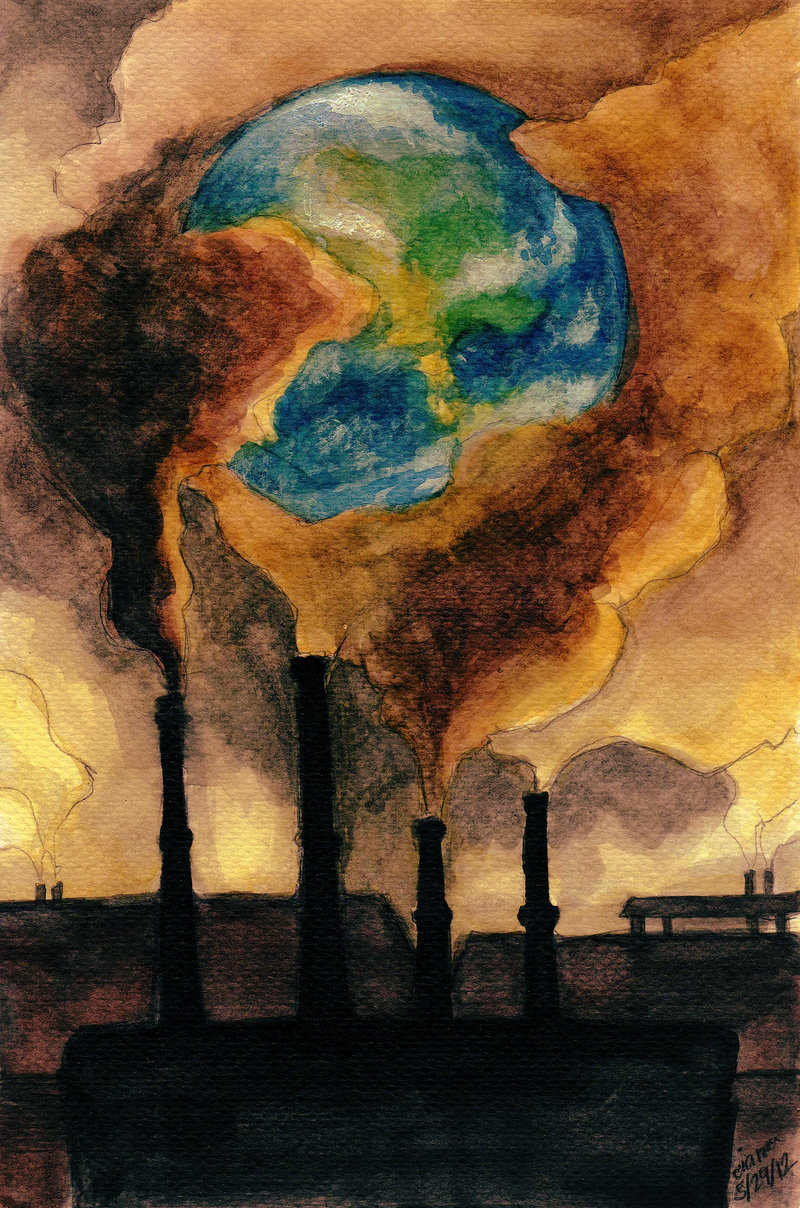 Thick overcast this early Tuesday on California’s north coast as rain continues its work, though, the NWS calls it ‘showers‘ and not actual full-blown rain.
Thick overcast this early Tuesday on California’s north coast as rain continues its work, though, the NWS calls it ‘showers‘ and not actual full-blown rain.
Drizzle?
Down south in the Bay Area this morning, however, precipitation is considered ‘heavy rain,’ and has already caused a shitload of ‘crashes, traffic hazards and flooding,’ and should lighten a bit, then ‘heavy’ again: ‘The heavy rain, which started late Monday, was expected to taper off into showers in the early afternoon before another heavy wave was to sweep through the area Tuesday evening.’
All in the wording, but not in practice.
Even as the UN climate conference gets underway this week in Lima, Peru, researchers in the UK have confirmed global warming is directly related to carbon emissions — and the shit stays in the air a long, long time.
(Illustration found here).
In an actual sense, this is nothing new. Climate people have been saying this all along, and the worse part is that the shit stays in the air long after it was puffed into the environment.
From Science Daily on Monday:
The theoretical equation reveals the complex relationship between carbon dioxide levels and the ocean system.
Burning fossil fuels increases atmospheric carbon dioxide levels leading to global warming and the greenhouse effect, which is partly offset by the oceans taking in both heat and carbon.
The results show every million-million tonnes of carbon emitted will generate one degree Celsius of global warming.
They also show that the build-up of carbon emitted over the last 200 years will then last for many centuries to millennia, even if carbon emissions are subsequently phased out.
The results also reveal that surface warming is related to the total amount of carbon emitted from fossil fuels, with little change over time as ocean carbon and changes in heat uptake almost cancel each other out.
Dr Phil Goodwin, from Ocean and Earth Science at the University of Southampton, said: “Our analysis highlights the nearly irreversible nature of carbon emissions for global warming. Once carbon has been emitted into the atmosphere the warming effect will last many centuries, even after much of the carbon has been absorbed by the ocean.”
“We cannot wait until after significant anthropogenic warming has occurred to reduce carbon emissions and hope the climate goes back to normal by itself, it won’t.”
And at the UN climate meeting in Peru, which started yesterday, is bordering on the ridiculous — a serious fuck-up.
Via Newsweek:
United Nations negotiators are meeting this week in Peru to forge a much-anticipated draft agreement to curb global climate change. They’re brimming with optimism after the recent climate agreement between the U.S. and China, which had eluded negotiators for years.
But amid the hope is a much darker reality: Years of stalled talks and baby steps toward action have all but ensured that we will pass the previous do-not-pass benchmark of 2 degrees Celsius of warming by 2100.
Now, The New York Times reports, the negotiators’ objective is to stave off atmospheric warming of 4 to 10 degrees by the end of the century, at which point, experts say, Earth may “become increasingly uninhabitable.”
What does 4 degrees Celsius warming look like?
According to several experts, 4 degrees is enough to melt most or all of the world’s ice.
As climatologist and former NASA Goddard Institute for Space Studies chief James Hansen put it in a paper published in the journal Nature last year:
“Four degrees of warming would be enough to melt all the ice…. You would have a tremendously chaotic situation as you moved away from our current climate towards another one.
“That’s a different planet. You wouldn’t recognise it…. We are on the verge of creating climate chaos if we don’t begin to reduce emissions rapidly.”
Steven Sherwood, a professor at the University of New South Wales, in Australia, and author of another study looking at the implications of 4-degree warming, came to a similar conclusion.
“4C would likely be catastrophic rather than simply dangerous,” Sherwood told The Guardian.
“For example, it would make life difficult, if not impossible, in much of the tropics, and would guarantee the eventual melting of the Greenland ice sheet and some of the Antarctic ice sheet.”
This creates an ocean of worry.